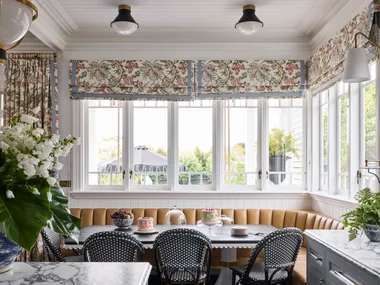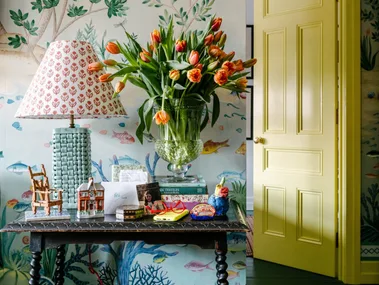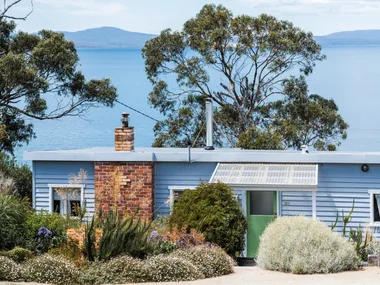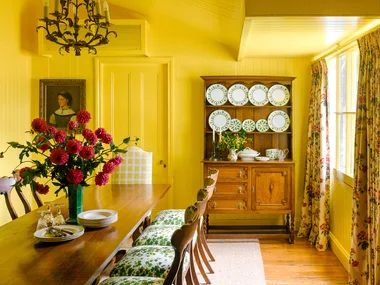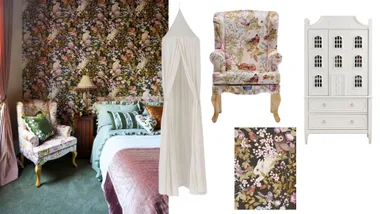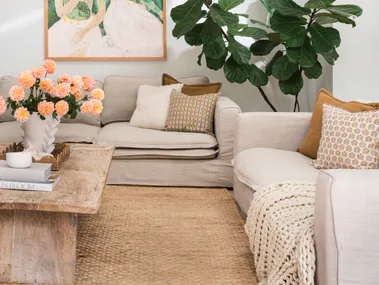It’s an undeniable fact: shades of white with a warm undertone are in. In recent years, there has been a subtle shift away from whites with a blue or black undertone towards whites with a creamier, cosier base. Haymes’ paint colour and concepts manager Wendy Rennie confirms that designers and renovators have well and truly moved on from cool-toned whites and neutrals. “There’s no coolness to neutrals at the moment, everyone is craving that warmth, which I think is really nice,” she says.
So what makes a shade of white warm? It helps to think about shades of white along a spectrum. White can range from cool (e.g. Dulux Lexicon Quarter) to neutral (Benjamin Moore White Dove) to warm (Haymes Pulp White 1). Warm whites will have yellow or pink undertones, whereas cooler shades will have blue or black undertones. “Warm and cool whites have different undertones and can help set a mood within a room,” explains Dulux colour expert, Andrea Lucena-Orr.
Considering the following will help you select the best warm white shade for your home: the history of the home, the amount of natural light the home receives and the type of mood you want to create. Here, we speak to expert renovators and stylists to uncover their tips for selecting the right white.
Most popular warm whites
Warm shades of white regularly make the list of best-selling paint colours:
- Dulux Natural White
- Dulux Antique White USA
- Dulux Whisper White
- Dulux Hog Bristle Quarter

- Haymes Pulp White 1
- Haymes Gradient 1
- Haymes Liveable White
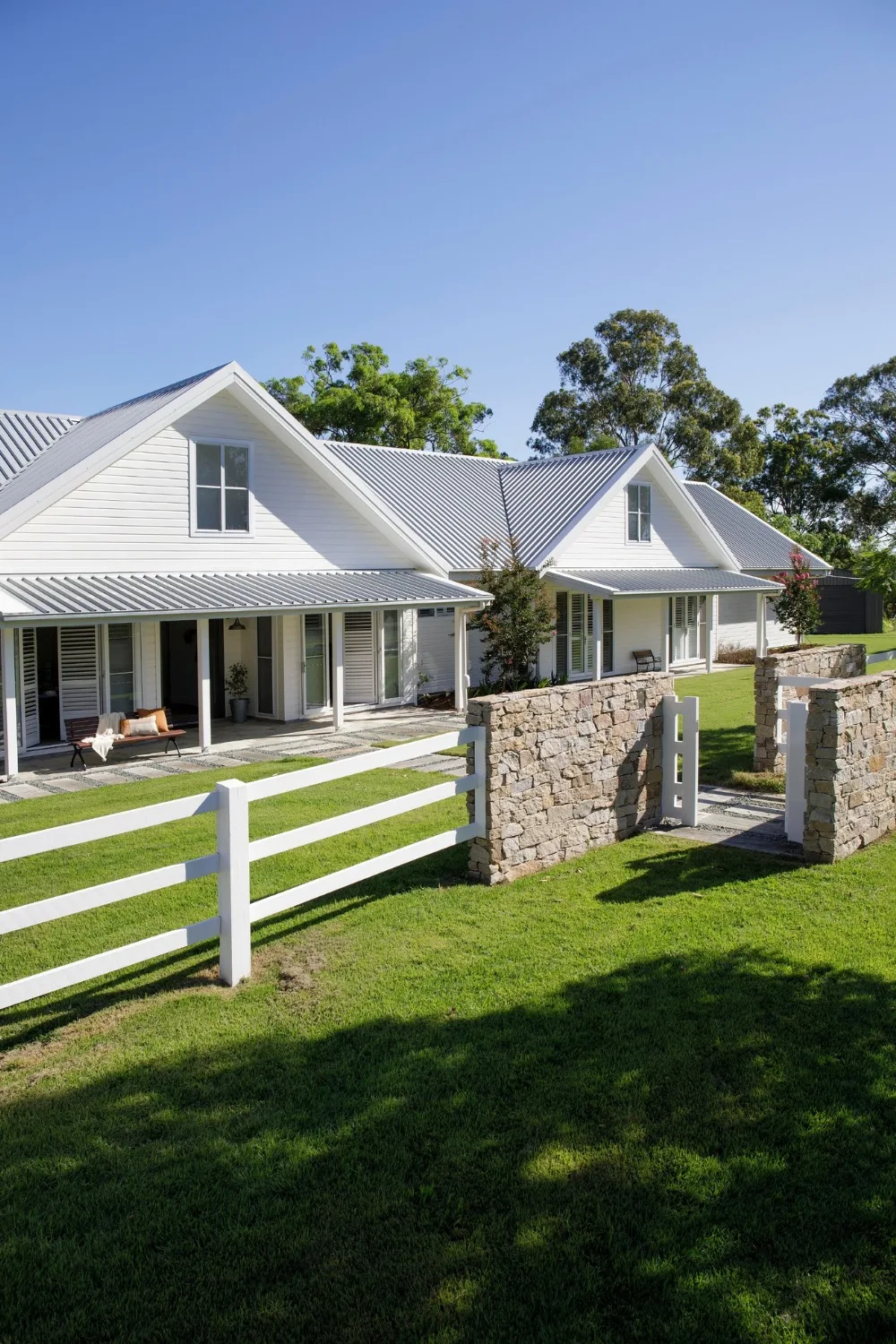
- Benjamin Moore Simply White
- Benjamin Moore Cloud White
- Benjamin Moore White Dove
1. Patch Test
“Always always trial a generous test patch first,” says Julia Green, Stylist, Writer, Presenter and Director of Greenhouse Interiors. That way you can find the right white for your space.
“Paint a large swatch of your shortlisted colours on the wall – immediately all is revealed about their differences and their nuances. Ensure you look at the painted swatches in the morning, the afternoon and at night to see how the colour changes under different light conditions,” says Lana Taylor, Marketing Director, Three Birds Renovations.
“My advice is to always use a sample pot or a brush out; bringing your two to three favourite whites into the space you intend to paint, comparing them in the light at different times of the day,” says Lucy Feagins, Founder and editor, The Design Files.
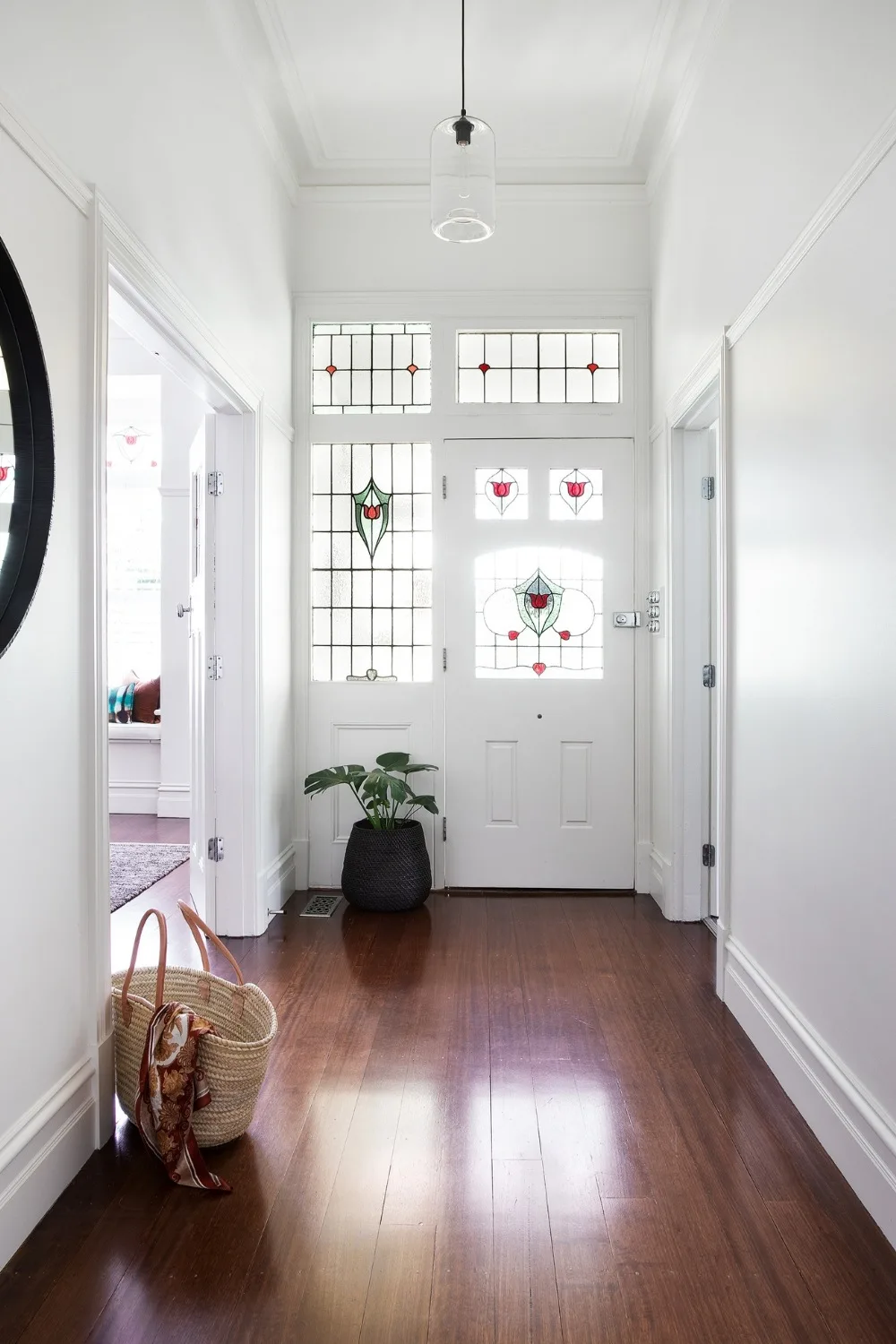
2. Consider lighting
If you don’t have much natural light, warm whites are much better than cool, which tend to cast a dark shadow in the shade.
“You need to think about how you want to feel in the space first and foremost. Then consider your surrounds and the amount of natural light that enters your space. Cool whites have a blue/black base, and translate as sharp, fresh, crisp and contemporary on the walls. They also neutralise natural sunlight so work well in north facing rooms where sunlight is at its peak; whereas warmer whites have a yellow/brown base and throw off warmer hues making a room feel cosier,” says Julia.
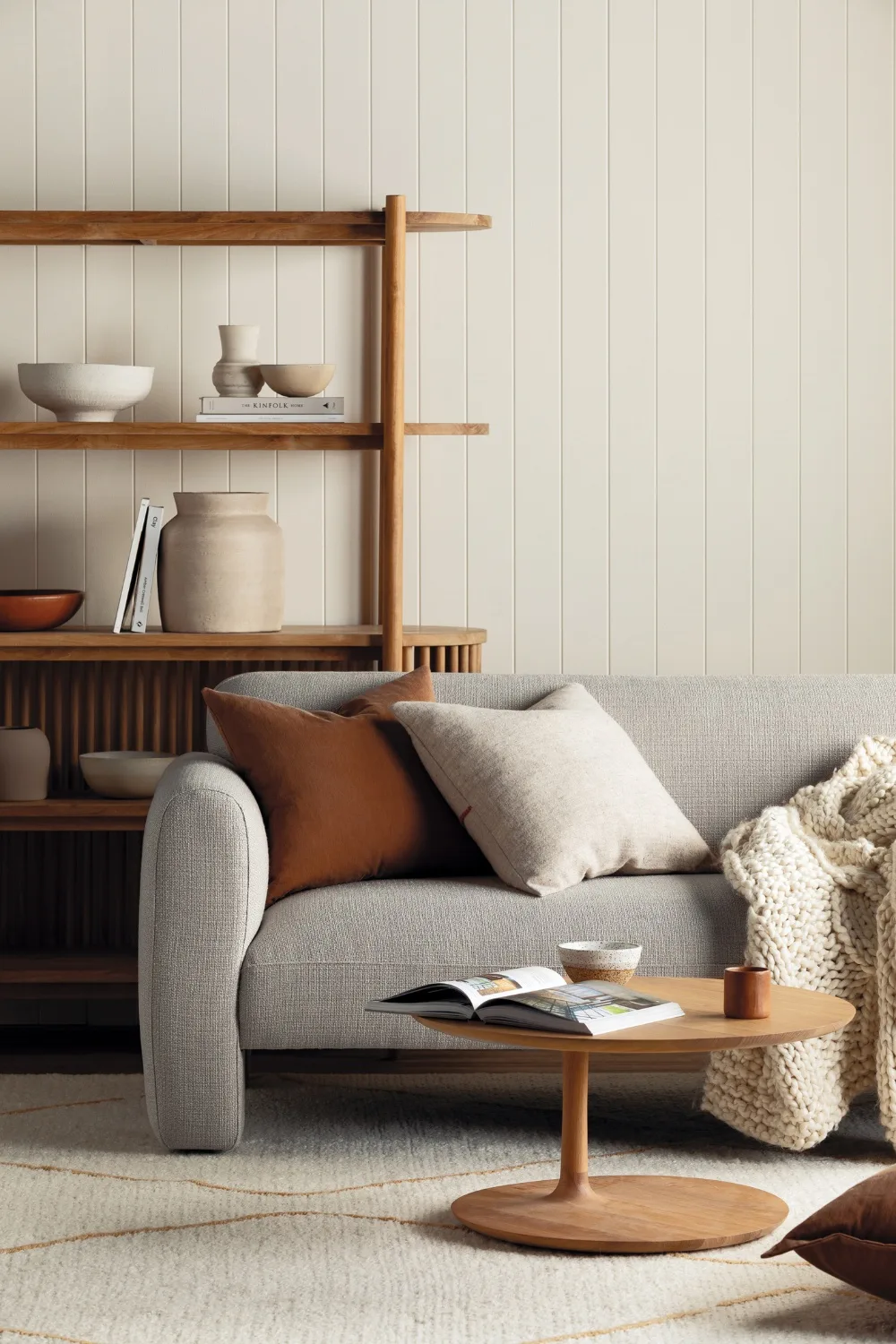
3. Personalise
Despite these practicalities, it’s important to consider how you want to feel in the space. This will dictate your colour choice in the biggest way and help you decide between cool and warm whites based on their different properties,” says Julia.
“Don’t fall into the trap of trends when choosing a white,” says Sara Chamberlain, founder and creative director of The Real Estate Stylist. “Think about your house and the space you are selecting the white for. If you have a light and bright space with a cooler colour scheme in carpet or cabinetry, then a cooler white may be for you. If you want to add some warmth to an older property that has a warmer scheme, such as cream carpet or tiling, then perhaps a warm white is the way to go. Think of your white as the backdrop to the rest of your house.”
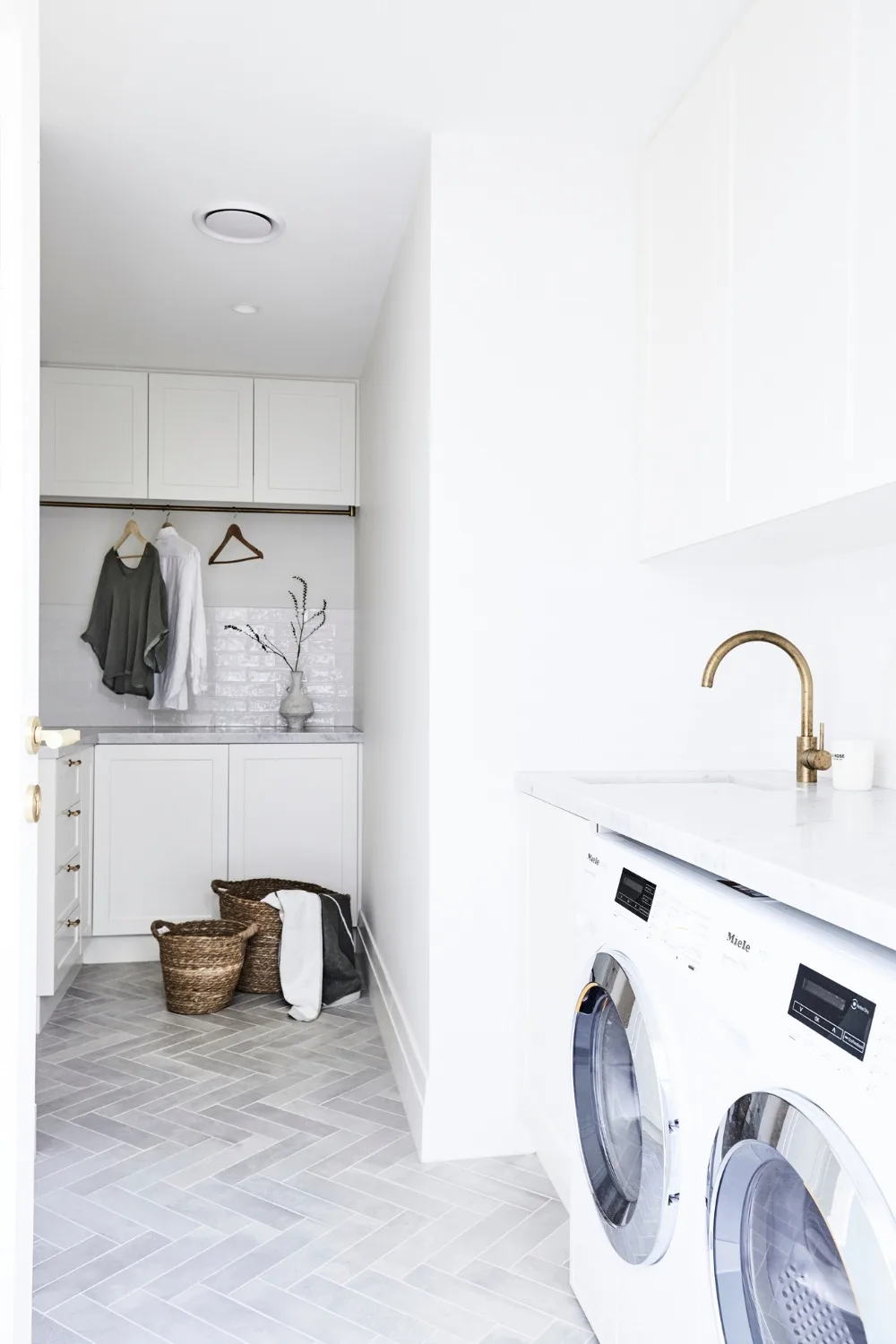
4. Consider heritage
“Generally, I like bright, slightly bluish-toned whites in contemporary, open plan and industrial spaces, and warmer whites are better suited to older spaces with period character, such as Victorian or Edwardian homes,” says Lucy.

